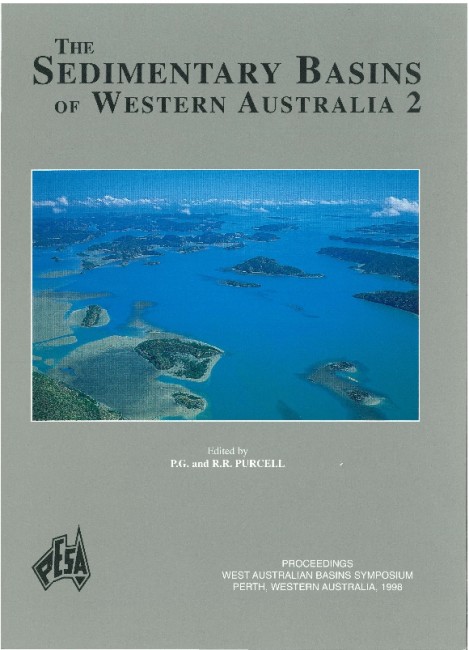Publication Name: The Sedimentary Basins of WA
Authors: Grant K. Ellis and Richard H. Bruce
Publication Volume: 2
Date Published: December 1998
Number of Pages: 23
Reference Type: Book Section
Abstract:
The Dongara oil and gas field in the onshore northern Perth Basin was discovered in 1966 by West Australian Petroleum Pty Ltd. Subsequent appraisal drilling defined an oil and gas accumulation with inplace gas of 14.3 Gm3 (508 BCF) and in-place oil of 16.6 GL (104 MMBBL), with a maximum gross gas column of 154 m overlying a 21 m gross oil column, in the Upper Permian Dongara Sandstone and the underlying Lower Permian Carynginia Formation and Irwin River Coal Measures. In addition, a small oil and gas pool was delineated in the ArranooSandstone Member of the Lower Triassic Kockatea Shale. Gas production from the Dongara Field and delivery to Perth via the West Australian Natural Gas Pipeline commenced in late October 1971. Oil production began in the mid 1970s.
The Dongara structure developed in the Upper Triassic to Lower Jurassic and the reservoirs were subsequently charged with at least two phases of oil from the Lower Triassic Kockatea Shale in the Dandaragan Trough. Wrench tectonism in the Cretaceous modified and compartmentalised the closure, and the structure was further modified by Tertiary tectonism. In response to this tectonism, gas sourced from the Irwin River Coal Measures and the Kockatea Shale displaced much of the oil accumulation. Subsequent influx of meteoric water via the Northampton Block to the north partially displaced the saline formation water underlying the hydrocarbon column.


